Occupation Dancer Name Ted Shawn | ||
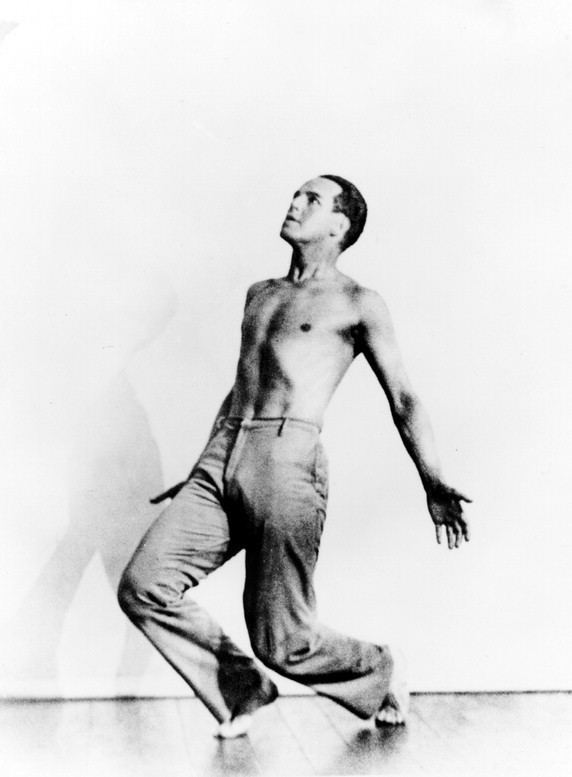 | ||
Full Name Edwin Myers Shawn Died January 9, 1972, Orlando, Florida, United States Books Ruth St Denis - Pioneer, Ruth St Denis: Pioneer, How Beautiful Upon the, 16 Dances in 16 Rhythms, Ruth St Denis Similar People Ruth St Denis, Martha Graham, Mary Wigman, Harry Houdini, Ann Hutchinson Guest | ||
Organizations founded Denishawn school | ||
Ted shawn s cosmic dance of siva
Ted Shawn (21 October 1891 – 9 January 1972), originally Edwin Myers Shawn, was one of the first notable male pioneers of American modern dance. Along with creating Denishawn with former wife Ruth St. Denis he is also responsible for the creation of the well known all-male company Ted Shawn and His Men Dancers. With his innovative ideas of masculine movement, he is one of the most influential choreographers and dancers of his day. He is also the founder and creator of Jacob's Pillow Dance Festival in Massachusetts, and "was knighted by the King of Denmark for his efforts on behalf of the Royal Danish Ballet".
Contents
- Ted shawn s cosmic dance of siva
- 7 kinetic molpai 1935 by ted shawn mkv
- Ted Shawn and the creation of Denishawn
- Style and technique
- Ted Shawn and His Men Dancers
- Jacobs Pillow
- Writings
- Legacy
- References
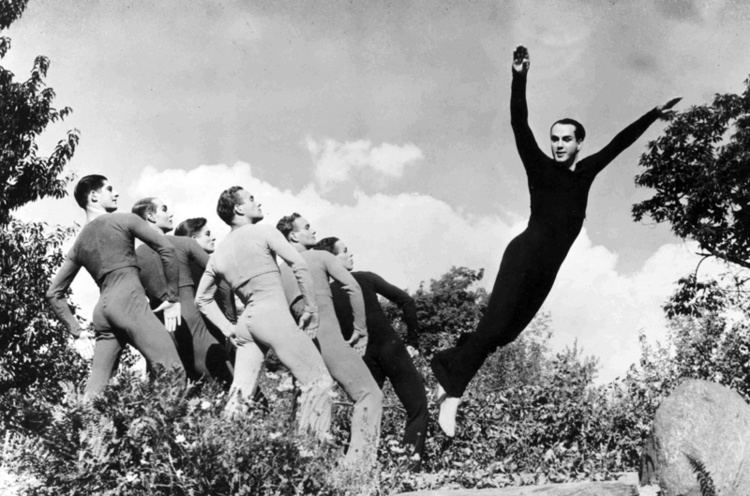
7 kinetic molpai 1935 by ted shawn mkv
Ted Shawn and the creation of Denishawn
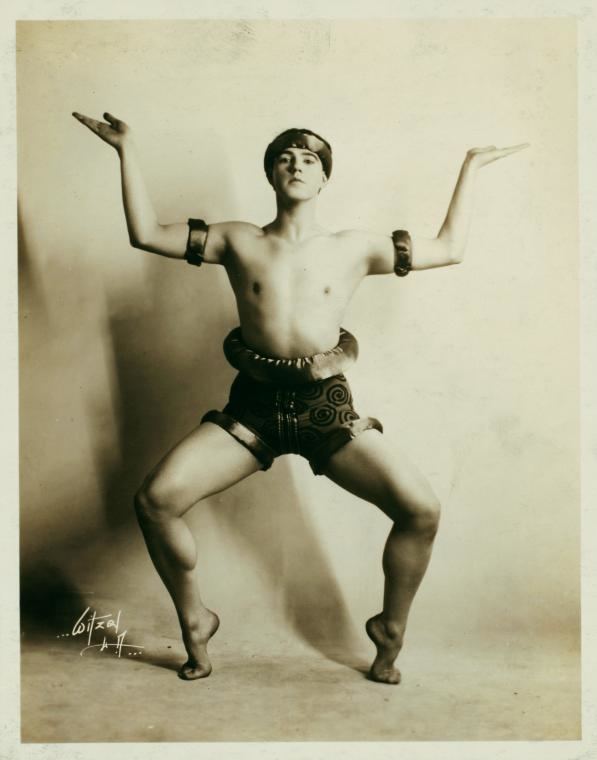
Ted Shawn was born in Kansas City, Missouri on October 21, 1891. Originally intending to become a minister of religion, he attended the University of Denver. While attending the University, he caught diphtheria at the age of 19 causing him temporary paralysis from the waist down. It was during his physical therapy for the disease that Shawn was first introduced to dance by way of studying with Hazel Wallack in 1910, a former dancer with the Metropolitan Opera. In 1912, Shawn relocated to Los Angeles where he became part of an exhibition ballroom dance troupe.

It wasn't until moving to New York in 1914 that Shawn realized his true potential as an artist upon meeting Ruth St. Denis. The two were married within 2 months on August 13th, 1914. St. Denis served not only as partner but an extremely valuable creative outlet to Shawn. Both artists believed strongly in the potential for dance as an art form becoming integrated into every day life. The combination of their mutual artistic vision as well as Shawn's business knowledge led to the couple opening the first Denishawn School in Los Angeles, California in 1915, with the goal being to meld dance together with the body, mind and spirit.
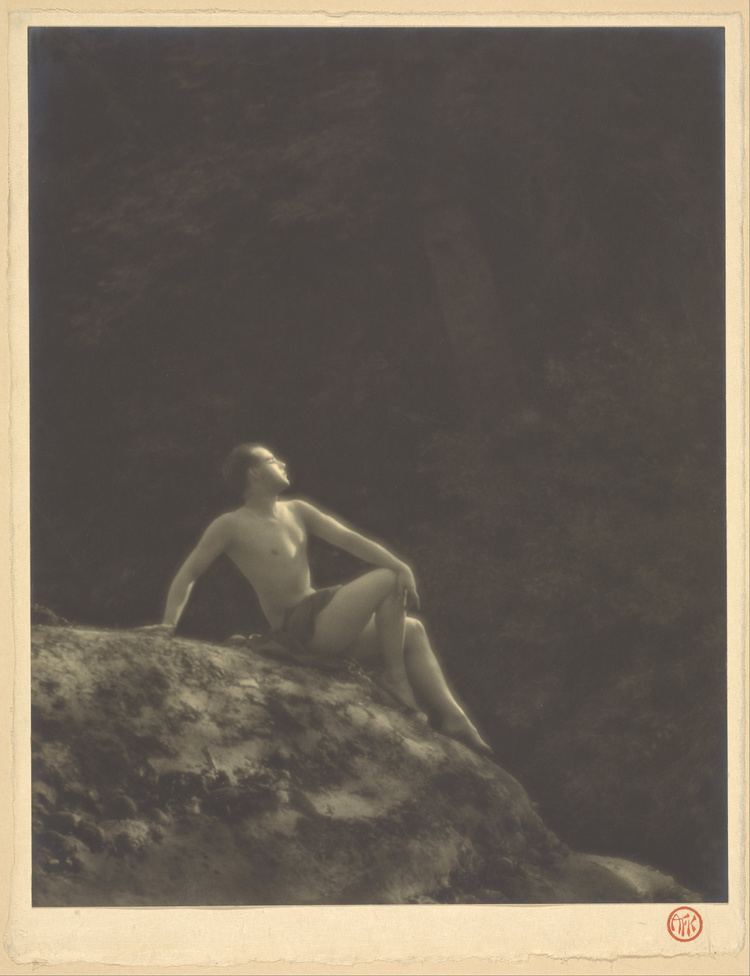
Notable performances choreographed by him during Denishawn's 17-year run include Invocation to the Thunderbird" (1917), the solo Danse Americaine, performed by Charles Weidman (1923), Julnar of the Sea, Xochitl performed by Martha Graham (1920) and Les Mysteres Dionysiaques. In addition to spawning the careers of Weidman and Graham, the Denishawn school also housed Doris Humphrey as a student.
Style and technique
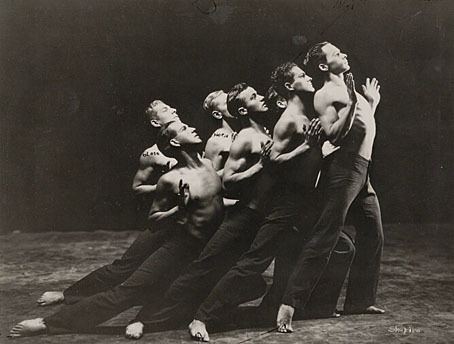
Together, Shawn and Ruth St. Denis established an eclectic grouping of dance techniques including ballet (done without shoes), and movement that focused less on rigidity and more on the freeing of the upper body. To add to St. Denis' mainly eastern influence, Shawn brought the spirit of North African, Spanish, American and Amerindian influence to the table.
Ted Shawn and His Men Dancers
Due to marital problems of Ruth St. Denis and Ted Shawn and financial difficulties, Denishawn concluded in the early 1930's. Consequently, Shawn went on to form an all-male dance company, made up of athletes he taught at Springfield College in Massachusetts. Shawn's mission in creating this company was to fight for acceptance of the American male dancer and to bring awareness of the art form from a male perspective.
The all-male company was based out of a farm that Shawn purchased near his hometown Lee, Massachusetts. On July 14, 1933, Ted Shawn and His Men Dancers had their premier performance at Shawn's farm, which would later be known as Jacob's Pillow Dance Festival. Shawn produced some of his most innovate and controversial choreography to date with this company such as "Ponca Indian Dance", "Sinhalse Devil Dance", "Maori War Haka", "Hopi Indian Eagle Dance", "Dyak Spear Dances", and "Kinetic Molpai". Through these creative works Shawn showcased athletic and masculine movement that soon would gain popularity. The company performed in the United States and Canada, touring more than 750 cities, in addition to international success in London and Havana. Ted Shawn and His Men Dancers concluded at Jacob's Pillow on August 31, 1940 with a homecoming performance.
During the years of the company, Shawn's love for the relationships created by the men in his dances soon translated into love between himself and one of his company members, Barton Mumaw (1912–2001), which lasted from 1931 to 1948. One of the leading stars of the company, Barton Mumaw would emerge onto the dance industry and be considered "the American Nijinsky." While with Shawn, Mumaw began a relationship with a John Christian, a stage manager for the company. Mumaw introduced Shawn to Christian. Later, Shawn formed a partnership with John Christian, with whom he stayed from 1949 until his death in 1972.
Jacob's Pillow
With this new company came the creation of Jacob's Pillow: a dance school, retreat, and theater. The facilities also hosted teas, which, over time, became the Jacob's Pillow Dance Festival. Shawn also created The School of Dance for Men around this time, which helped promote male dance in colleges nationwide.
Shawn taught classes at Jacob's Pillow just months before his death at the age of 80. In 1965, Shawn was a Heritage Award recipient of the National Dance Association. Shawn's final appearance on stage in the Ted Shawn Theater at Jacob's Pillow was in Siddhas of the Upper Air, where he reunited with St. Denis for their fiftieth anniversary.
Saratoga Springs is now the home of the National Museum of Dance, the United States' only museum dedicated to professional dance. Shawn was inducted into the museum's Mr. & Mrs. Cornelius Vanderbilt Whitney Hall of Fame in 1987.
Writings
Ted Shawn wrote and published nine books that provided a foundation for Modern Dance:
Legacy
In the 1940s, Shawn gifted his works to the Museum of Modern Art. The museum subsequently deaccessed these works, giving them to New York Public Library for the Performing Arts and Jacob's Pillow archive, while Shawn was still alive. Dancer Adam Weinert saw this as a violation of MoMA's policy not to sell or give away works by living artists, and created The Reaccession of Ted Shawn, digital, augmented reality performances of Shawn's works to be displayed in MoMA.
